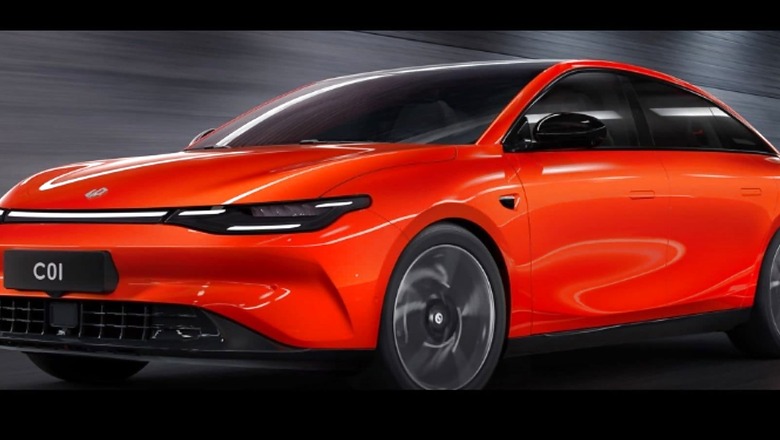
views
In China, which has one of the world’s fastest-growing electric vehicle (EV) markets with an estimated 500 manufacturers, Hangzhou-based Leapmotor recently took the wraps off its new C01 electric performance car – a mid-to-large-sized smart electric sedan with cell-to-chassis technology.
As per the reports, the car will be available in five variants, with prices ranging from 180,000 yuan to 270,000 yuan ($26,784 to $40,176).
This electric car is thought to be a formidable competitor to Tesla’s electric car because it has advanced level features and power. While this four-wheeler may not be making its way overseas just yet, its maker’s ambitions to compete with global rivals like the Tesla Model S Plaid cannot be questioned.
As reported by Car News China, Leapmotor is a Chinese EV startup, but as of April 2022, the company had delivered 9,087 units in China, representing a more than 200% increase year on year. It’s also six times what Tesla sold in China last month.
Features
According to the company website, the Leapmotor C01 can reach from 0 to 100 kmph in less than four seconds. This is made possible by a 90kWh battery and a 542hp motor. Customers will be able to choose between five different variants and four range options — 500km, 606km, 630km and 717km.
This electric car has CTC technology or cell-to-chassis, which according to the company’s website “integrates battery module into the vehicle body, creating higher battery impact resistance and stronger torsional strength of vehicle body”.
Additionally, the C01’s drag coefficient of 0.226 is considered as an impressive achievement. ‘Drag coefficient’ is a measure of how effective a streamlined aerodynamic body shape is at reducing air resistance to a vehicle’s forward motion.
The drag coefficient is accomplished through the use of frameless doors, concealed door handles, a roofline that flows effortlessly to the back and low drag rims on all four wheels of the EV. To add to the effect, the car’s front grille is also closed.
In terms of technology, the C01 uses the Qualcomm Snapdragon 8155 chip, which runs three different screens. Face recognition is used for driver identification and personalization.
Inside the vehicle, there are three large screens, one for the instrument cluster, one for the infotainment system and one for the co-infotainment passenger’s display. Aside from that, the EV has 28 sensors throughout and over 23 autonomous driving features.
The vehicle will be available in the second quarter of this year. According to Leapmotor, pre-orders for this vehicle will begin soon.
However, this is not the first electric vehicle in the company’s lineup. The company is already selling C11 and T03 electric vehicles.
China’s EV Market
As part of the Made in China 2025 industrial master plan, the Chinese government encourages domestic brands to gain a larger share of the market.
According to a report, the Chinese electric vehicle market was valued at $124.2 billion in 2021 and is expected to reach $799 billion by 2027, with a CAGR of more than 30.1% over the forecast period (2022 – 2027).
Covid-19 had a negative impact on the market in 2020.
Market growth in China has been hampered by lockdowns and lower population income. Manufacturing and sales activities were halted, and the supply chain was disrupted, limiting market growth in 2020.
Despite such issues, Leapmotor’s sales records highlighted the fact that the company understands how to manoeuvre its sales around pandemic restrictions.
However, China is currently working toward the development of sustainable transportation and as a result, the electrification of this sector became a major goal. Over a significant period of time, the country may also see an increase in adoption of electric buses.
More than 30 Chinese cities have made plans to achieve 100% electrified public transportation in the near future.
EV sales accounted for approximately 60% of total vehicle sales in cities without a vehicle increment limit, demonstrating there is still significant room for growth in electric vehicle sales in China in the coming years.
However, it should be noted that passenger cars are currently in higher demand than commercial vehicles, and this trend is expected to continue throughout the forecast period.
Read all the Latest Auto News here

















Comments
0 comment